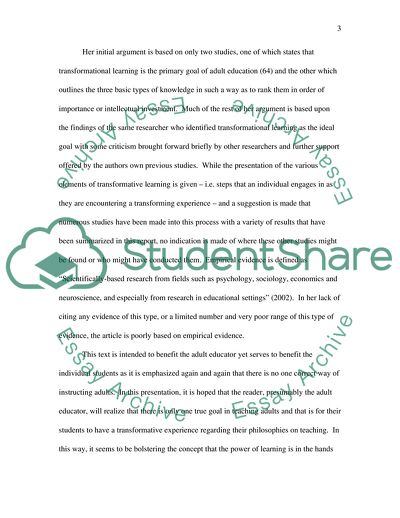Cite this document
(Teaching for Transformation by Patricia Cranton Article, n.d.)
Teaching for Transformation by Patricia Cranton Article. Retrieved from https://studentshare.org/education/1707993-critical-analyse-and-critique-the-article-tranformative-to-learning-by-cranton
Teaching for Transformation by Patricia Cranton Article. Retrieved from https://studentshare.org/education/1707993-critical-analyse-and-critique-the-article-tranformative-to-learning-by-cranton
(Teaching for Transformation by Patricia Cranton Article)
Teaching for Transformation by Patricia Cranton Article. https://studentshare.org/education/1707993-critical-analyse-and-critique-the-article-tranformative-to-learning-by-cranton.
Teaching for Transformation by Patricia Cranton Article. https://studentshare.org/education/1707993-critical-analyse-and-critique-the-article-tranformative-to-learning-by-cranton.
“Teaching for Transformation by Patricia Cranton Article”, n.d. https://studentshare.org/education/1707993-critical-analyse-and-critique-the-article-tranformative-to-learning-by-cranton.


